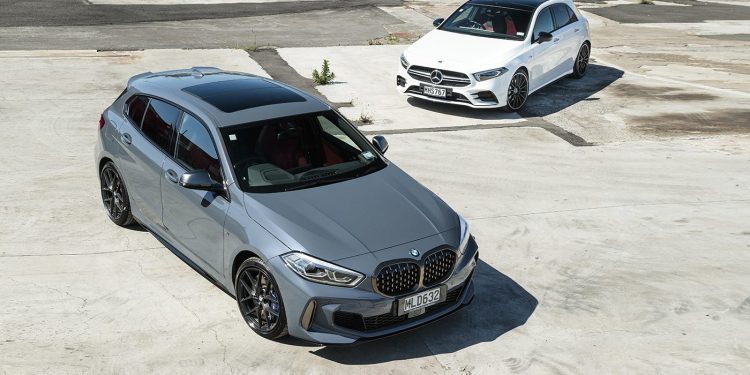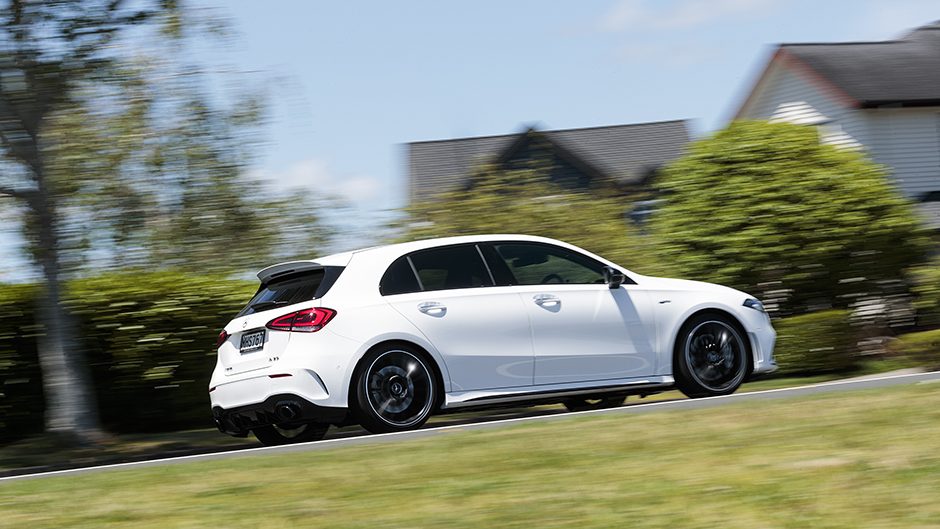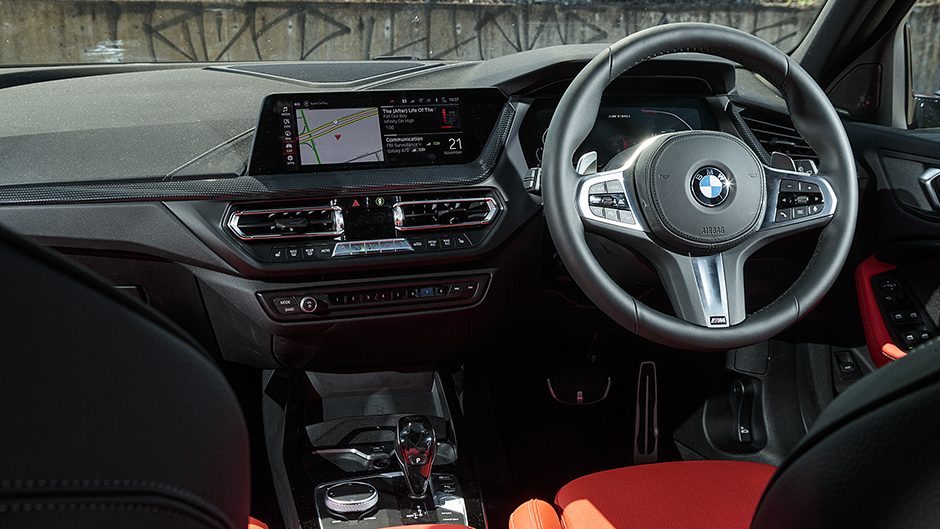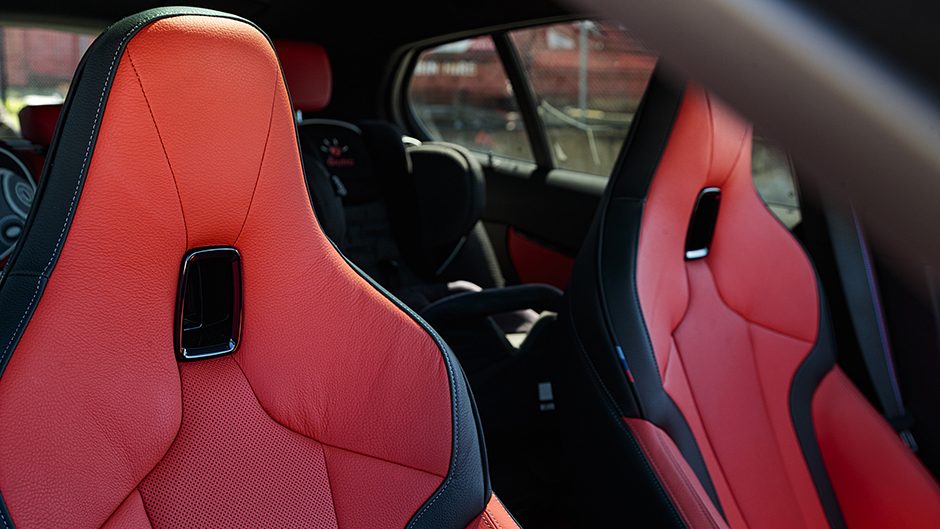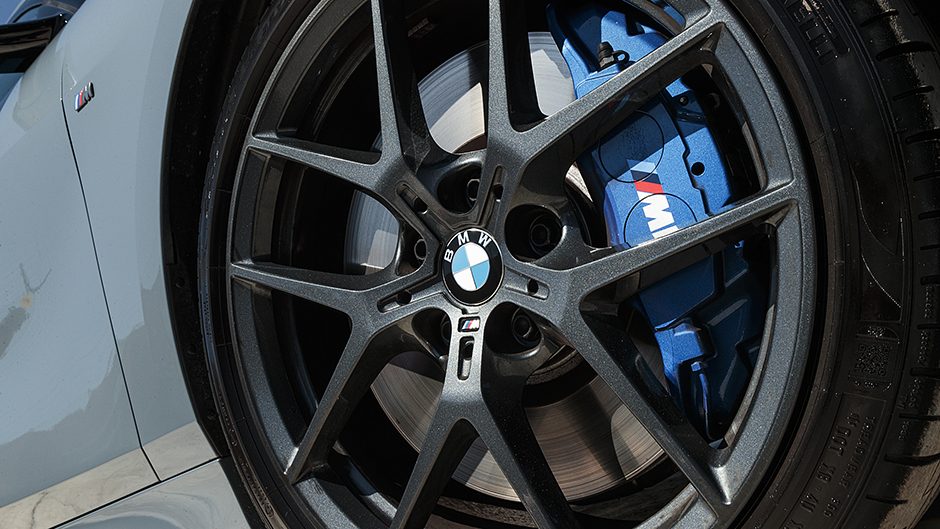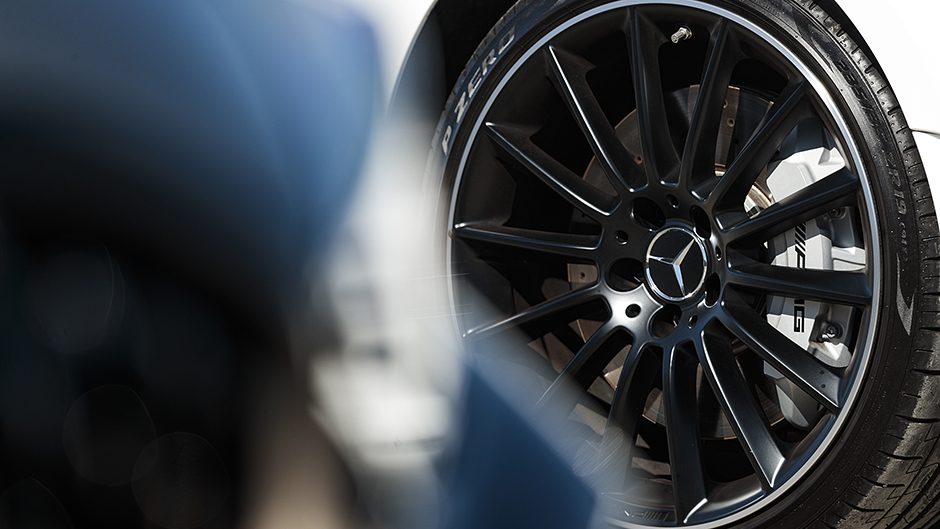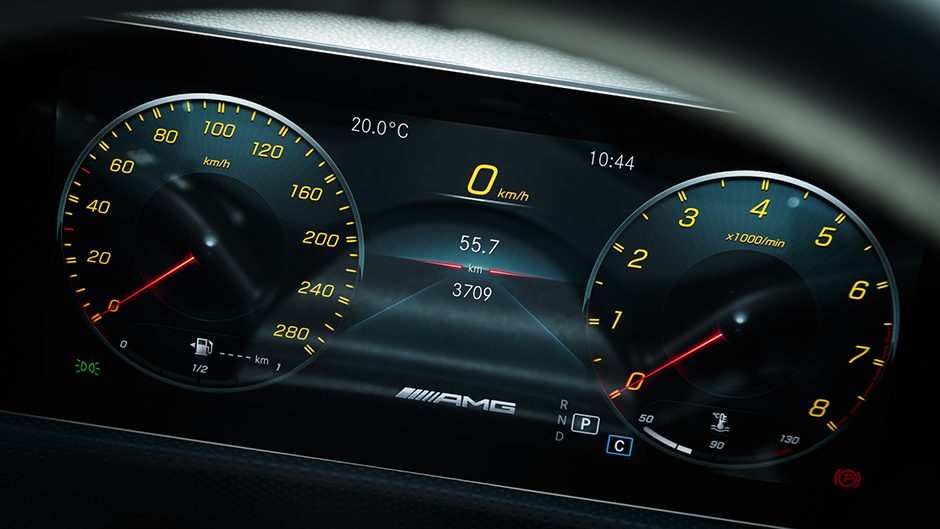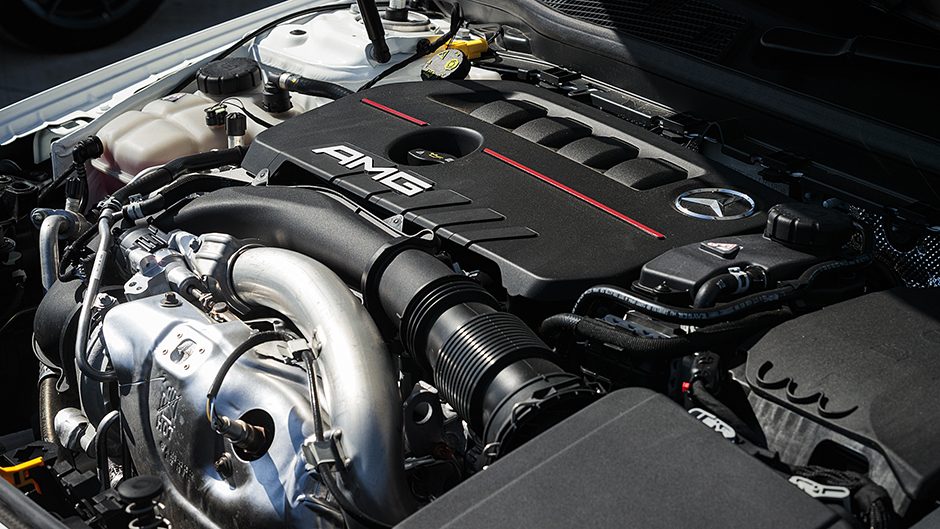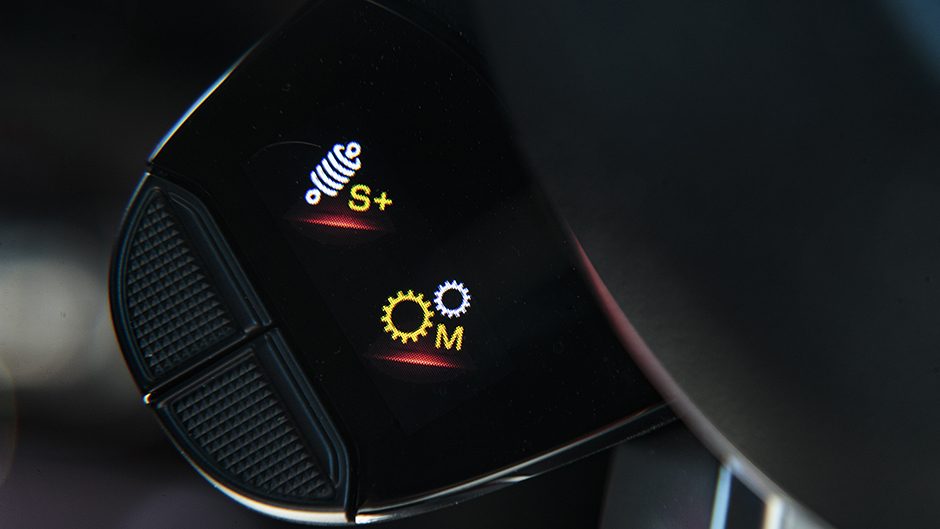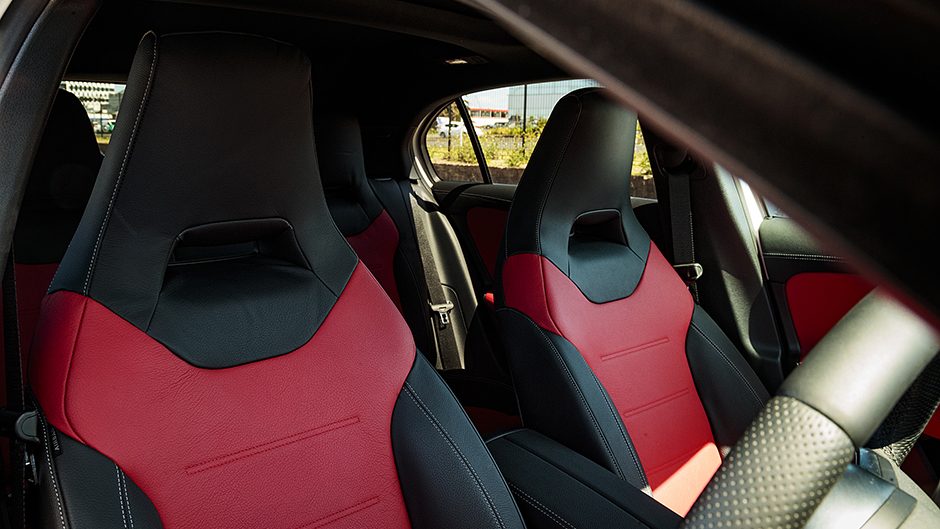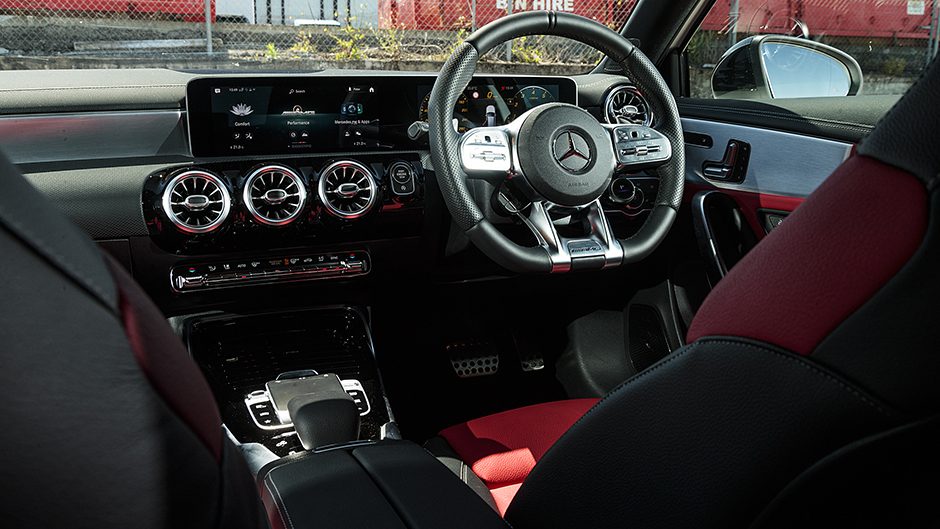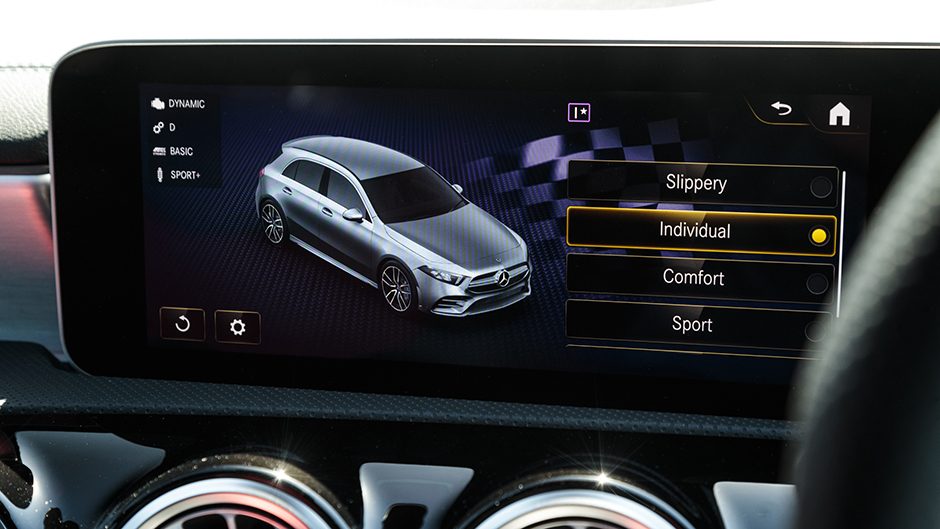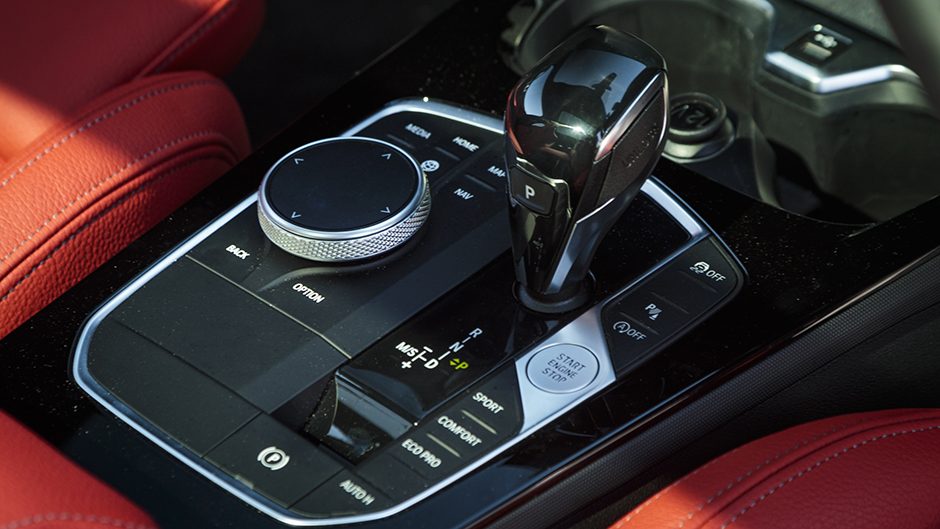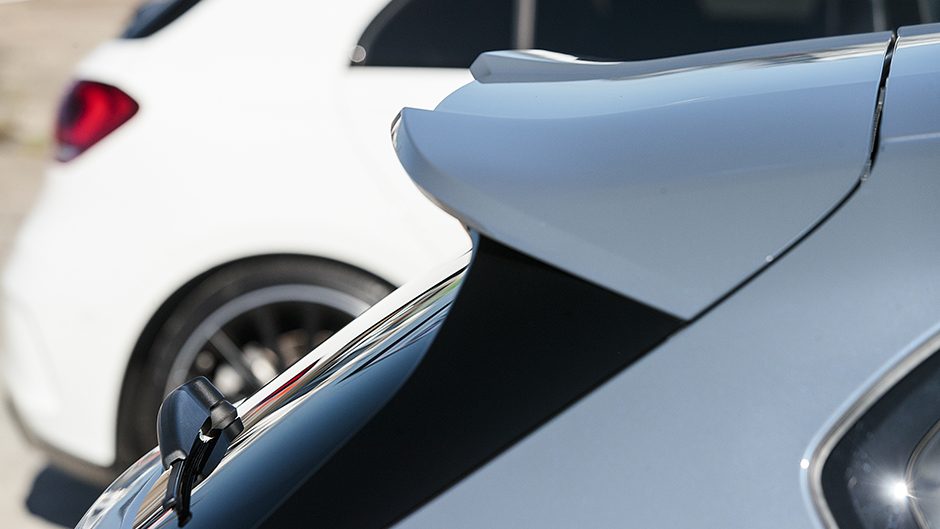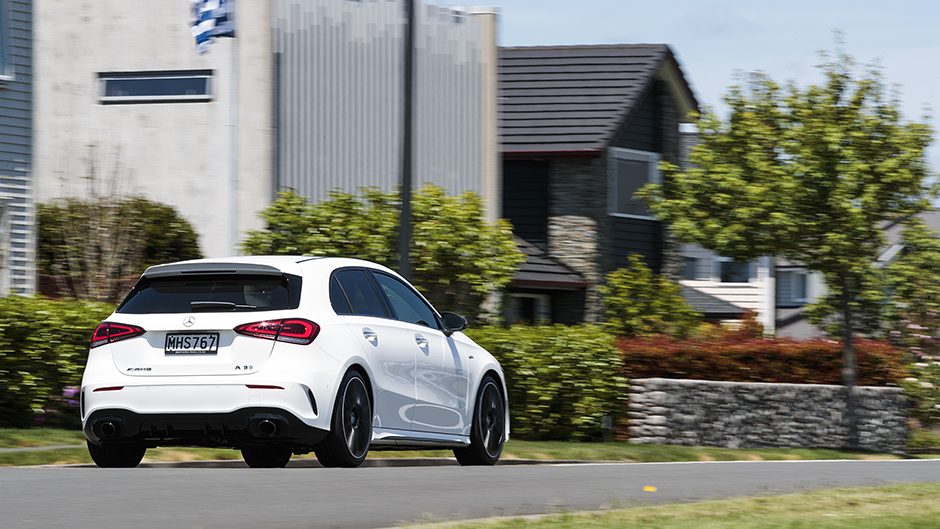2019 BMW M135i vs Mercedes-AMG A 35 comparison
Words Kyle Cassidy | Photos Tom Gasnier
The hot hatch market is alive and well, and welcomes a new M135i to the mix. It’s now a different beastie, but better matches its arch rivals. Here we officiate a duel between the new all-wheel drive M135i and AMG’s A 35.
The lineage of each car here has deviated somewhat over the years. The A-Class was born a Euro-centric mini-MPV that survived an inauspicious start after falling over during the infamous moose test. It morphed into a more conventional hatch a generation ago, one that was more fit for the AMG treatment, and the A 45 was a riot.
BMW’s original 1 Series adhered to the company’s rear drive doctrine, delivering a great car to drive, but one that wasn’t much to look at, and a pain to sit in the back of. As most owners didn’t really know which wheels were doing what, the third gen has gone conventional with a front-drive layout that brings more interior space. The NZ line-up consists of a 118i with its wee three putting out 103kW and 220Nm and costs around the $50k mark. The only other model available presently is the range topper, the M135i with double the mumbo, AWD and a price tag of $83,500. It’s aimed at the Audi S3, and Mercedes-AMG’s new A 35, which is here for a fight. It’s the entry point to AMG, costing $85,800 and, like the BMW, is powered by a 2.0-litre turbopetrol, drives all four wheels via an auto gearbox, and is dressed with all the appropriate premium kit. These two are similar in most respects, but which is the real hot hatch?
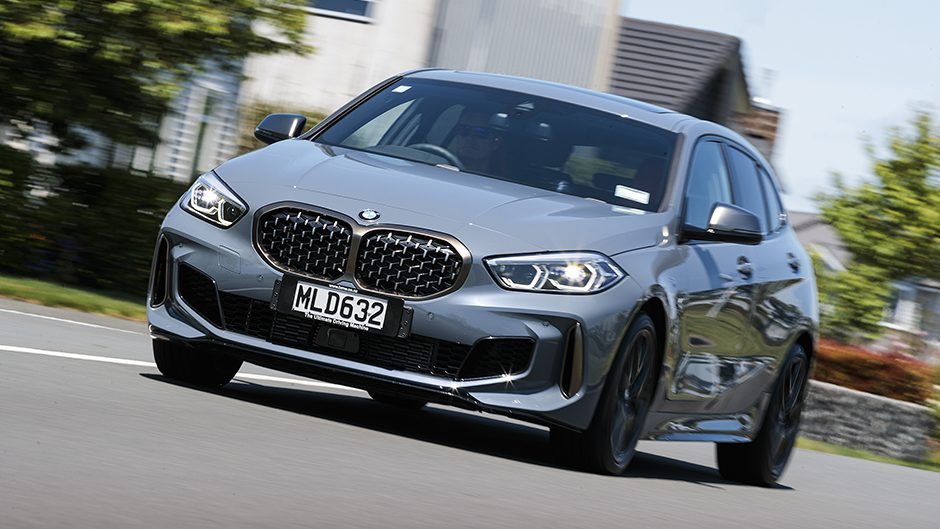
1 Series unique no longer
The third-gen 1 adopts the firm’s front-drive platform with a transverse engine to gain efficiencies in packaging, and we’d wager it costs a lot less to manufacture. The new 1 is 5mm shorter overall, and 20mm shorter in the wheelbase, while being 34mm wider and slightly taller. Knees get 33mm more space in the rear, while there’s added head and elbow room, and easier entry. The boot is up 20L to 380. For the M135i, BMW has worked its regular 2.0-litre turbo over, giving it beefier internals, and better injectors and coolers to cope with the added boost of the bigger blower. It gives 225kW and 450Nm, and exhales via a sports exhaust with a digitised sound enhancer. Processing the flow is an eight-speed torque convertor auto, with Sport mode and a launch control function for full thrust acceleration, with BMW claiming 4.8 seconds for the run to 100. The new 1 is said to be more rigid and lighter than the old car with the M135i benefitting from further chassis reinforcements, stiffer suspension hardware, a more direct steering ratio and added aero to reduce lift. Also included is Performance Control, the BMW term for torque vectoring by brake, working on the inside wheels in a bend. There’s a Torsen LSD up front, on demand AWD, and M performance spec brakes. Adaptive dampers are optional.

The A game
Following the same recipe, the A 35 has a worked 2.0-litre turbo, the result being 225kW and 400Nm, and AMG says this will blaze to 100km/h in 4.7sec. It runs a similar on-demand type AWD but uses a seven-speed twin-clutch box. It too has added bracing to shore up the body while the suspension is lowered and stiffened but gains adaptive damping as standard. The brakes are upgraded and there’s a layer of code in the stability control, called AMG Dynamics, responsible for subtle brake inputs at each corner to improve its behaviour in bends. For the complete A 35 rundown, check out our review here. As to looks, most we canvassed thought the M135i packed more visual muscle, and all reckoned it was a better look than the previous model. The A 35 is quite understated, but you can race that up with an optional spoiler and winglet kit.
Indoor sports
Both run a sports luxury theme inside, mimicking each other with racy red leather seats. We found the BMW’s comfier, with better adjustment and just the right amount of support, whereas the A’s tended a tad firm. With added width, the new 1 Series gains a more spacious feeling cabin up front, its design and layout more conventional while the A appears a tad flashy in comparison. Both are well built and lined with quality materials. Each has twin digital displays, the 35 with an expanse of screens across the dash, which offer greater customisation. Voice control is a feature in both, which is primarily for the infotainment functions, and we thought Hey Mercedes was smarter while grasping the subtle nuances of our commands better.
The head-up in the M135i is big and clear, so too the reversing camera image, while it gets the handy reverse assistant. This has the car retracing its path, taking care of the steering to ease you out of tight spots. The A 35 offers an optional surround view camera which is excellent.
The new 1 Series now offers rear passengers a better time, being much easier to get into for a start and there’s a smidge more legroom than in the A 35. There’s not much between them for luggage capacity, the A’s hatch being slightly deeper, and a little wider, while both have split folding, but neither has a spare wheel.
While the BMW has a cheaper base price, once you add a few options to each to balance out the specification, there’s not much separating them, the BMW at $91,010 as tested, the AMG at $89,370. While there’s a good deal offered as standard, extended driver aids like active cruise command more, and you’ll need to option adaptive suspension on the M135i.
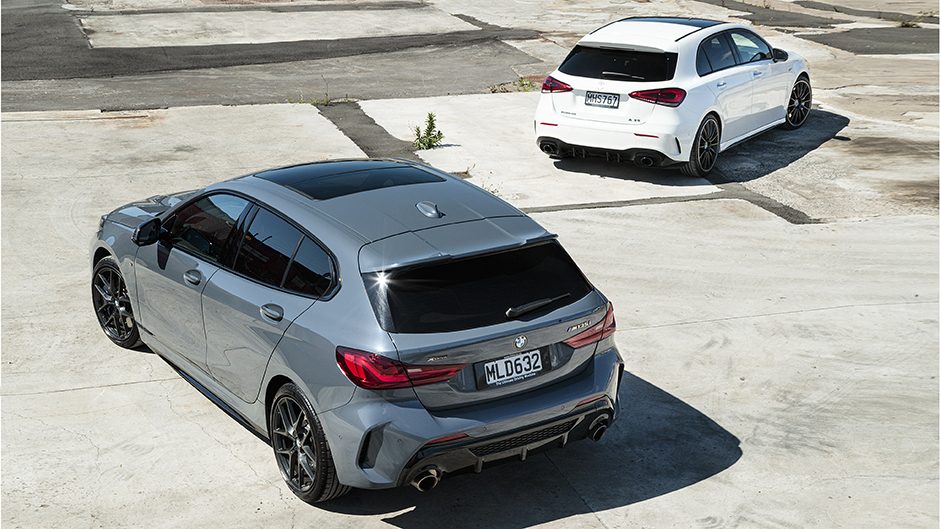
Round town racers
Though built for speed, much of the time you’re battling traffic or cruising the suburbs in these. Here, the BMW is more refined, the Mercedes racier, but harsher. This will likely determine which gets your vote. The M135i is much quieter on road while you don’t notice as many of the bumps either. On the flip side, the A 35 feels genuinely energetic compared with the M135i. The AMG will haul off the mark when you punch the gas, where you’ll need to stall the BMW up if you want to win the on-ramp battle. Both are well on boost by 2000rpm, but when you need more action, the AMG is always quicker to react, and without the need to activate the Sport mode, which does help in the M135i. The BMW’s torque convertor auto is better at low speed manoeuvres, where the A 35 can slur its clutch pack, especially on hills, and there’s the odd clunk from the driveline too. They have similar turning circles, and quick, light helms in Comfort mode. Expect similar consumption too; 12L/100km during shorter, stop/start-type trips while more motorway miles will bring this down into the nines.
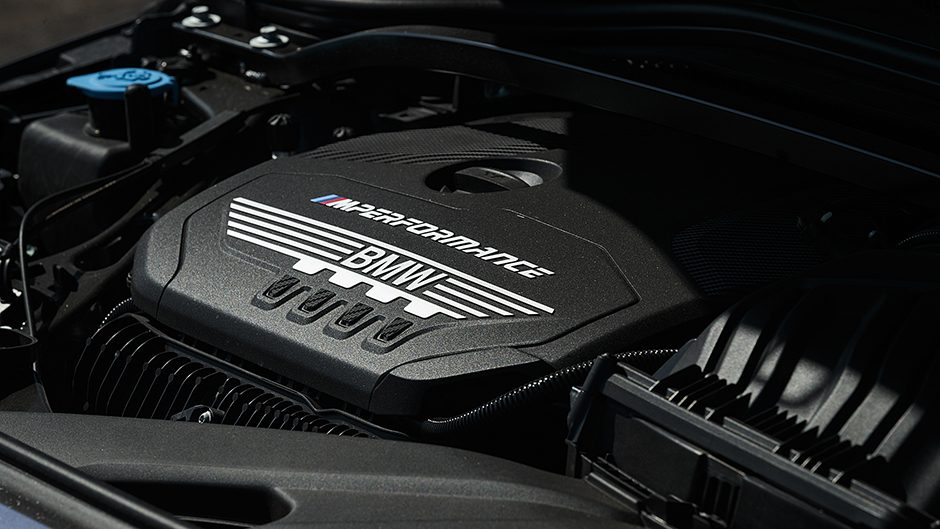
On the run
Both claim a sub-five sprint time but only the AMG delivers. Even with the BMW’s launch control online, we couldn’t crack into the fours, whereas the A 35 did consistently, its launch control firing it off the line, and being easier to initiate. Despite a 50Nm deficit, the A 35 punches harder, surges faster than the M135i. We thought it might be a weight thing, but there’s only five kilos in it. The AMG is more effective at using what it has. They each have a broad spread of torque, which is streaming from 2000rpm and the boosted fours spin merrily through to six. Both will chew at a rate of 15L/100km when exercised. The BMW’s auto isn’t as snappy with its shifts as the AMG-tweaked twin-clutch, which is also quicker on the downshifts, thanks to racier protocols. It’s not quite as smooth, but that’s the trade off.
The AMG has more drive modes, including a Sport plus option missing from the BMW, and myriad ways to engage them. We like that AMG has added buttons on the steering wheel for easier fiddling. The AMG’s suspenders are set a smidge firmer than the BMW’s in Sport mode, and firmer again in Sport plus, which is too much for road use. These deliver a locked down drive for the A 35, and a more immediate response to the steering, but also transmit more of the road, particularly in the way of noise. This is roaring even at 80km/h on coarse chip.
Each gets into a satisfying flow through the turns, but push the issue and its the A 35 that tracks around the bends more assuredly. The AMG Dynamics trickery does as intended, and the 35 is in better shape than the BMW when it comes time to punch off the turn. The DSC has the M135i on a tight lead, but stepping the system back a notch frees the chassis up, for a more playful attitude. However it is one that still can’t quite match the might of the A 35. So, if you want something that is quick and refined, it’s the BMW but the A 35 is the feister, more genuine hot hatch here.
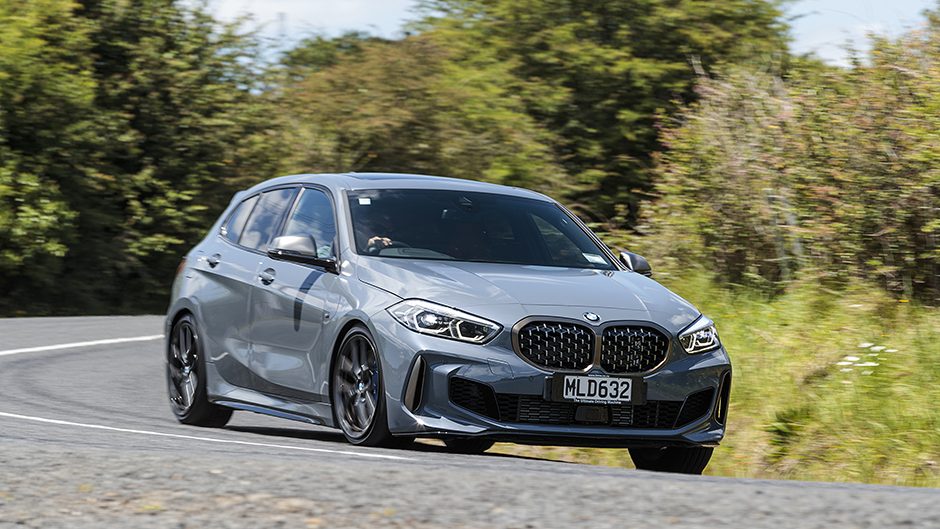
| Model | BMW M135i xDrive | Price | $83,500 |
| Engine | 1998cc, IL4, T/DI, 225kW/450Nm | Drivetrain | 8-speed auto, on-demand AWD |
| Fuel Use | 5,05L/100km | C02 Output | 171g/km |
| 0-100km/h | 5.05sec | Weight | 1578kg |
| Model | Mercedes-AMG A 35 | Price | $85,800 |
| Engine | 1991cc, IL4, T/DI, 225kW/400Nm | Drivetrain | 7-speed twin-clutch, on-demand AWD |
| Fuel Use | 4.69L/100km | C02 Output | 169g/km |
| 0-100km/h | 4.69 sec | Weight | 1573kg |


